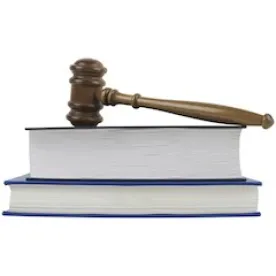The controversy that swirled around the 2013 Cariou v. Prince[1] decision was once again ignited with the Seventh Circuit’s recent decision in Kienitz v. Sconnie Nation LLC[2] – a decision that, fairly or unfairly, took direct issue with Cariou’s transformative standard of fair use. Cariou reverberated through the legal community for a number of reasons. One, in particular, is that it blurred the long recognized distinction between a parody and satire under copyright fair use. But what is the difference between parodic and satiric fair use and how did Cariou muddy the waters?
Parody vs. Satire in Copyright Law
In Campbell v. Acuff-Rose Music, Inc.[3] the Supreme Court took a close look at the fair use doctrine in general and its specific application to parodic work. The court first recognized that whether a work constitutes fair use is determined on a case-by-case basis weighing the four statutory factors: (1) the purpose and character of the use, (2) the nature of the copyrighted work, (3) the amount and substantiality of the portion used, and (4) the effect of the use upon the potential market.[4] It went on to note, though, that parodic work, which it defined as a literary or artistic work that imitates the characteristic style of an author or a work for comic effect or ridicule, like other works that comment and criticize, is by its nature often sufficiently transformative to fit clearly under the fair use exception.[5] The court stated that like other forms of comment or criticism, a parody can provide social benefit, “by shedding light on an earlier work, and, in the process, creating a new one.”[6] In other words, parodies can be considered “transformative” works. As to the distinction between satires and parodies, the Court explained that while a parody must mimic the original work to make its point, a satire uses the work to criticize something else, and therefore requires justification for the very act of borrowing.[7] As a result, the Court appeared to favor parody under the fair use doctrine, while devaluing satire.
Following the distinction created in Campbell, subsequent courts have focused on the dichotomy between a parody and satire and provided deference to parodic work under the fair use doctrine. Essentially, finding that if a new work arguably comments or criticizes the original work, a parodic character reasonably can be perceived, and the remaining factors will fail to militate against a finding of fair use.[8]
Cariou’s Effect on the Dichotomy
So how exactly did Cariou throw a wrench in the parody/satire distinction? Well…by expanding what is considered transformative use.
In Cariou the Second Circuit examined whether 30 works by “appropriation artist” Richard Prince that altered and incorporated various copyrighted photographs by Patrick Cariou qualified as fair use. Although the Second Circuit analyzed each of the Copyright Act’s fair use factors, it particularly emphasized the first factor: the purpose and character of the use. The District Court had concluded that to be transformative a use must “comment on, relate to the historical context of, or critically refer back to the original works.”[9] Thus, it found persuasive that in his deposition, Prince testified that he did not intend to transform or comment on Cariou’s works.[10]
The Second Circuit, however, found the standard applied by the District Court to be erroneous. It held that “[t]he law imposes no requirement that a work comment on the original or its author in order to be considered transformative, and a secondary work may constitute a fair use even if it serves some purpose other than those … identified in the preamble to the statute.”[11] Instead, the court found that the correct standard is whether the new work would be “reasonably perceived” by a “reasonable observer” to alter the original with “new expression, meaning, or message.”[12] Applying this standard, the court found 25 of the 30 works at issue transformative as a matter of law because they “manifest an entirely different aesthetic from Cariou’s photographs.… Prince’s composition, presentation, scale, color palette, and media are fundamentally different and new compared to the photographs, as is the expressive nature of Prince’s work.”[13]
By applying a standard that the work be reasonably perceived by a reasonable observer to alter the original with new expression, meaning or message, the court expanded the fair use doctrine to protect satiric and parodic work equally. A satiric new work can reasonably be seen as altering the original work with new expression and meaning—that meaning being the criticism of something other than the original work. By casting aside the insistence of previous courts on parody or direct commentary on the original work, Cariou expanded the concept of fair use into transformative use. How willing courts are to use this more expansive standard is still up in the air as the case of Kienitz shows. For now, courts continue to struggle with the tangled web of ambitious fair use opinions, especially as they apply to ever evolving forms of art.
[1] 714 F.3d 694 (2nd Cir. 2013).
[2] 766 F.3d 756 (7th Cir. 2014).
[4] Id. at 577-78.
[5] Id. at 579-80.
[6] Id. at 580.
[7] Id. at 580-581.
[8] See Abilene Music, Inc. v. Sony Music Entm’t, 320 F. Supp. 2d 84, 89 (S.D.N.Y. 2003) (“Once a work is determined to be a parody, the second, third, and fourth factors are unlikely to militate against a finding of fair use.”); Brownmark Films, LLC v. Comedy Partners, 682 F.3d 687, 693 (7th Cir. 2012) (noting that parody is a favored use under a fair use analysis). See also Leibovitz v. Paramount Pictures Corp., 137 F3d 109, 114 (2d Cir. 1998) (“Applying Campbell . . . we inquire whether Paramount’s advertisement ‘may reasonably be perceived,’ as a new work that ‘at least in part, comments on’ Leibovitz’s photograph.”); Dr. Seuss Enterprises, LP v. Penguin Books USA, Inc., 109 F3d 1394, 1401 (9th Cir. 1997) (“Although The Cat NOT in the Hat! does broadly mimic Dr. Seuss’ characteristic style, it does not hold his style up to ridicule.”).
[9] Cariou v. Prince, 784 F. Supp. 2d 337, 348 (S.D.N.Y. 2011).
[10] Id.
[11] Cariou, 714 F.3d at 706 (citing Campbell)
[12] Id.
[13] Id.




 />i
/>i

